There is also a plan with an airline ticket.
Mogami Kogei: Inheriting the future of Edo Sashimono craft and the neighborhood
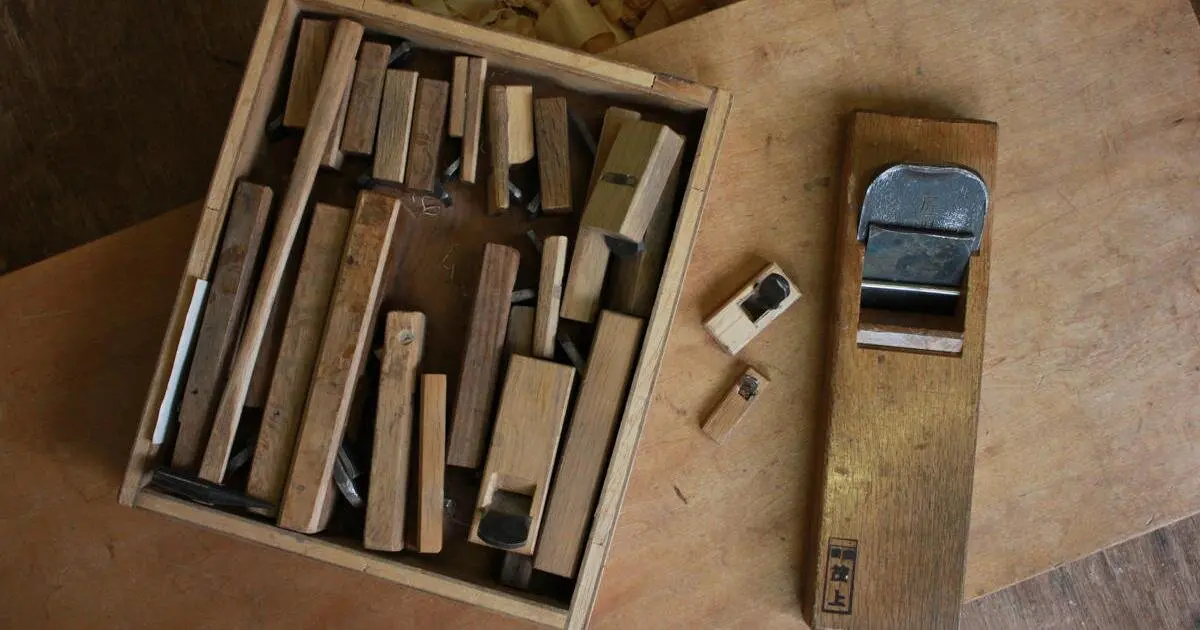
--Mr. Mogami, you're a traditional craftsman who is also involved in the activities of the Kuramae Sankei Town Association. Has this area been one with many Edo sashimono craftsmen like yourself?
(Yutaka Mogami, Craftsman of Mogami Kogei) There used to be many wood craftsmen in Taito Ward, centered around the Iriya area, with a relatively large number of carpenters in Kuramae, where my studio is located, along with the Kojima and Misuji areas. There are currently about ten members in the Edo Sashimono Kyodokumiai (Edo Wood Joinery Association). The number has dropped by half since I entered the trade in the late 1970s.
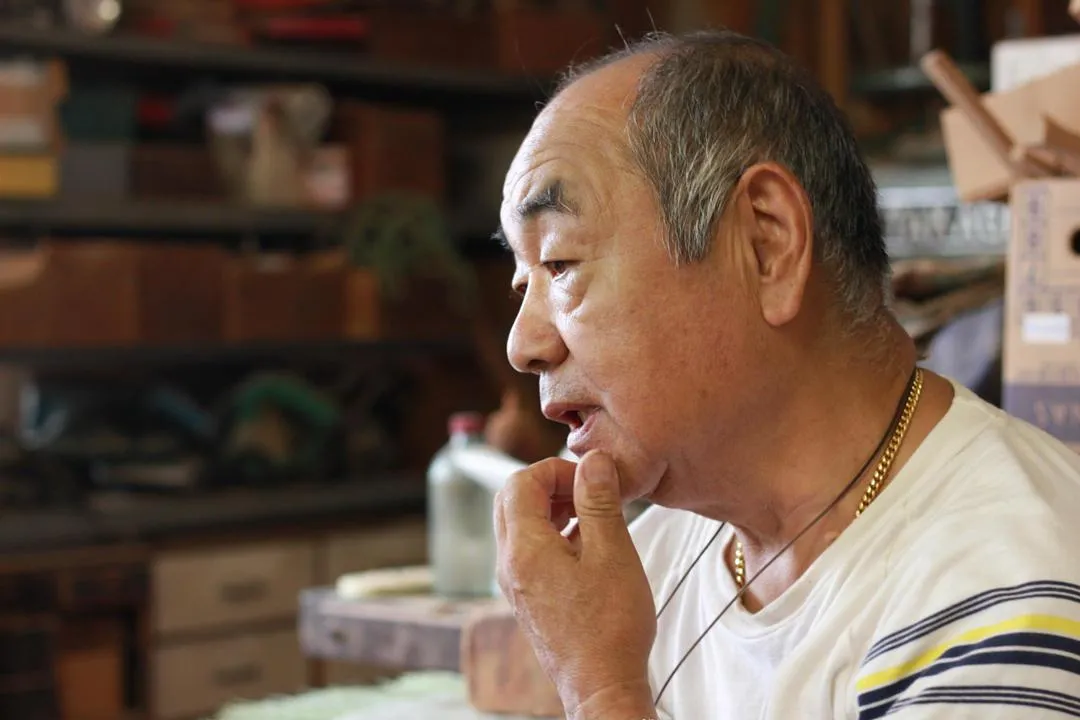
It has been over 100 years since my grandfather founded the studio on this spot. Almost everyone on my father's side of the family, including my grandfather, died, though, in the aerial bombing of Tokyo during World War II, so I have never met any of them. Fortunately, my father who was deployed in the war and his sister who was part of an evacuation of school children, both survived. The studio was burned entirely to the ground, but a collection of tools stored under an earthen pipe were miraculously saved. For that reason, my father was able to get back to work quickly once he returned from the war.
My father devoted all his strength to securing the designation of Edo sashimono as a national traditional craft. Having grown up watching my father's devotion to the craft, I naturally followed the same path, knowing that I would one day take over the studio. I have now been working in this field for 40 years.
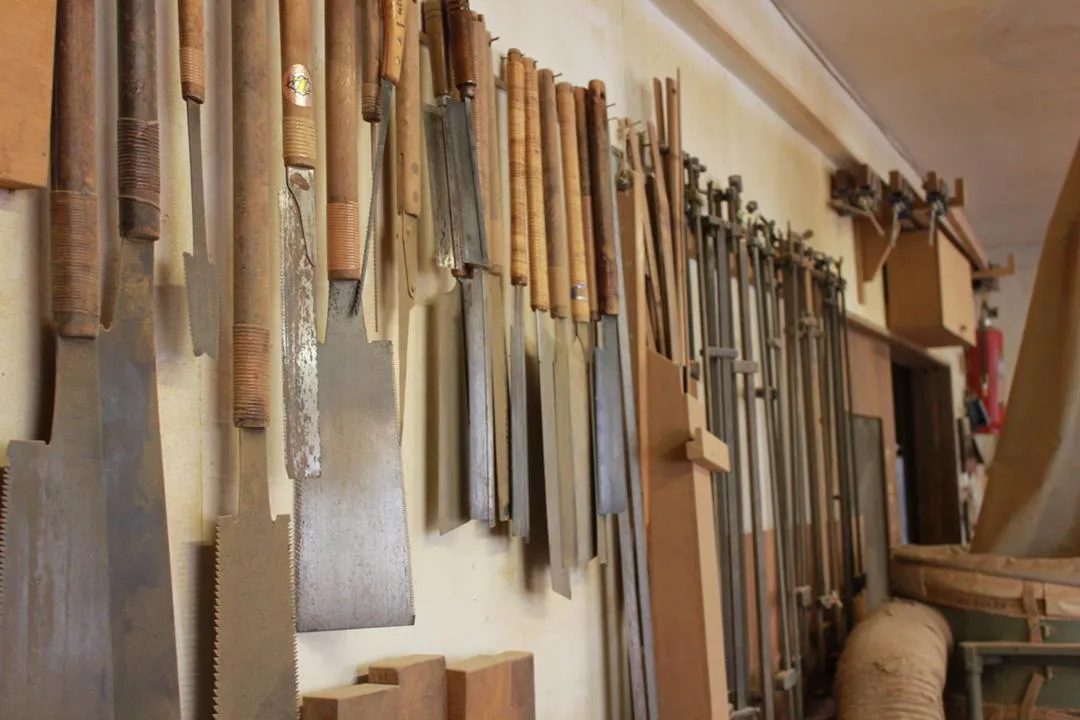
--Sashimono wood joinery works are craft product made without using any nails, but instead relying on cut joints (concavo-convex shape cut) known as hozo in Japanese to join wood together. What do you think is the most unique characteristic of Edo sashimono?
Edo sashimono pays great respect to the refinement of the Edo period. It uses thin panels and slender columns compared to other joinery forms, and while it may seem dainty and elegant at first glance, it is actually sturdily joined just out of view. This is the defining feature of Edo sashimono compared to other areas' sashimono craft, and the very essence of the aesthetics of refinement. The craft brings out the utmost beauty of the wood grain colors and texture.
The most difficult part of wood joinery is cutting the joints themselves. We adjust the size and shape of all of the slots and holes in order to increase the adhesive strength of the joints. Even if the size of the slot is just one millimeter off, the joint may not fit. If we force in joint that feels a little bit stiff, the board can even break. Everything must be made accurately down to the finest detail, or the finished product will start showing problems as it is used.
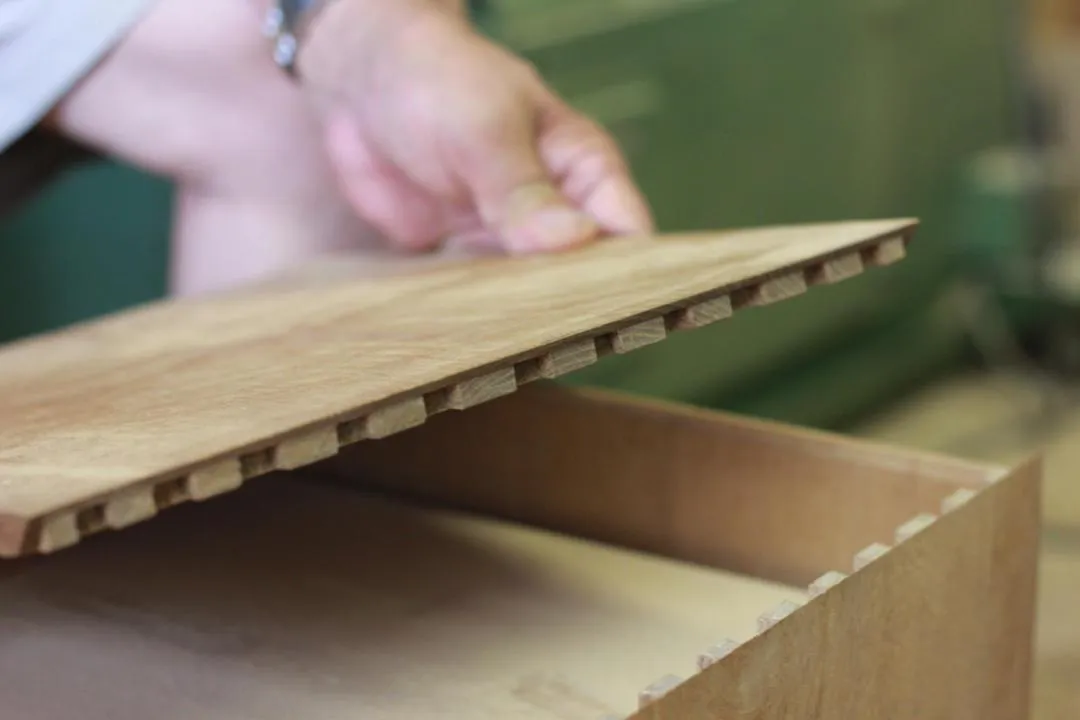

--You hold a workshop for making Edo sashimono on an irregular basis. What is the reason for this?
Since wood joinery is a method used primarily in the finest furniture, it is generally not very well known. We used to produce and sell our works through wholesalers. However, those wholesalers have now disappeared, so we have to promote our activities through our own efforts. I started the workshops to share the state of modern Edo sashimono, including its history and the background of production, with more people.
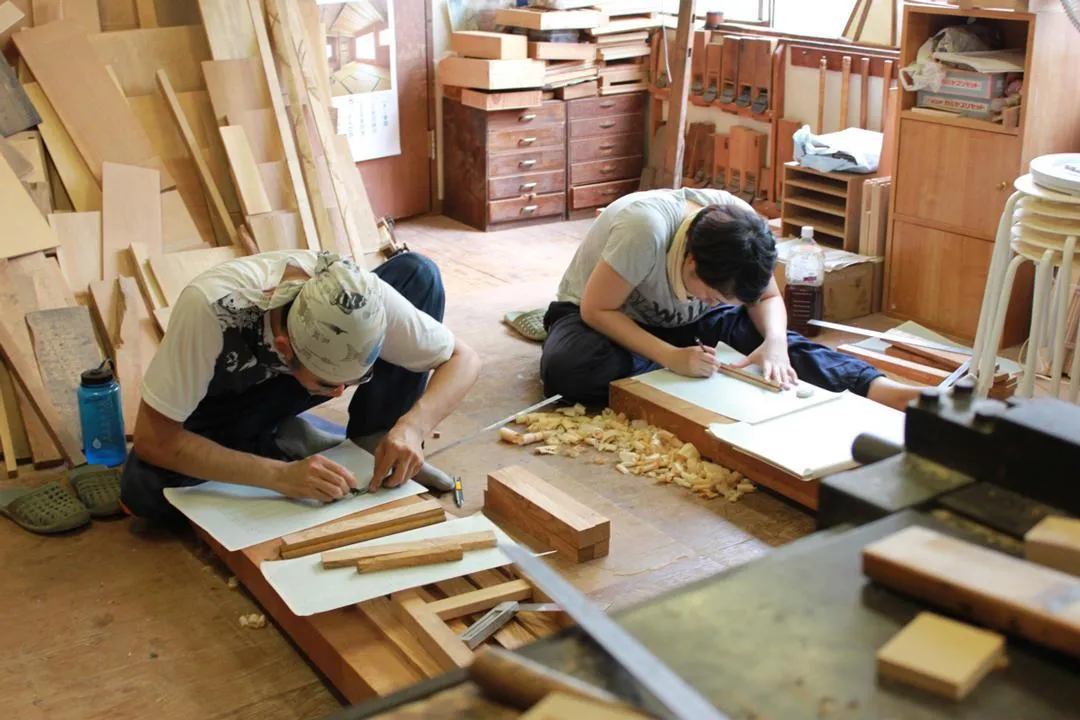
Participants in the workshop include elementary and junior-high school students on their school trips, and foreign tourists. Most of them have never even held a wood plane before, and the foreign tourists are especially surprised by the cultural differences in our daily living spaces and customs.
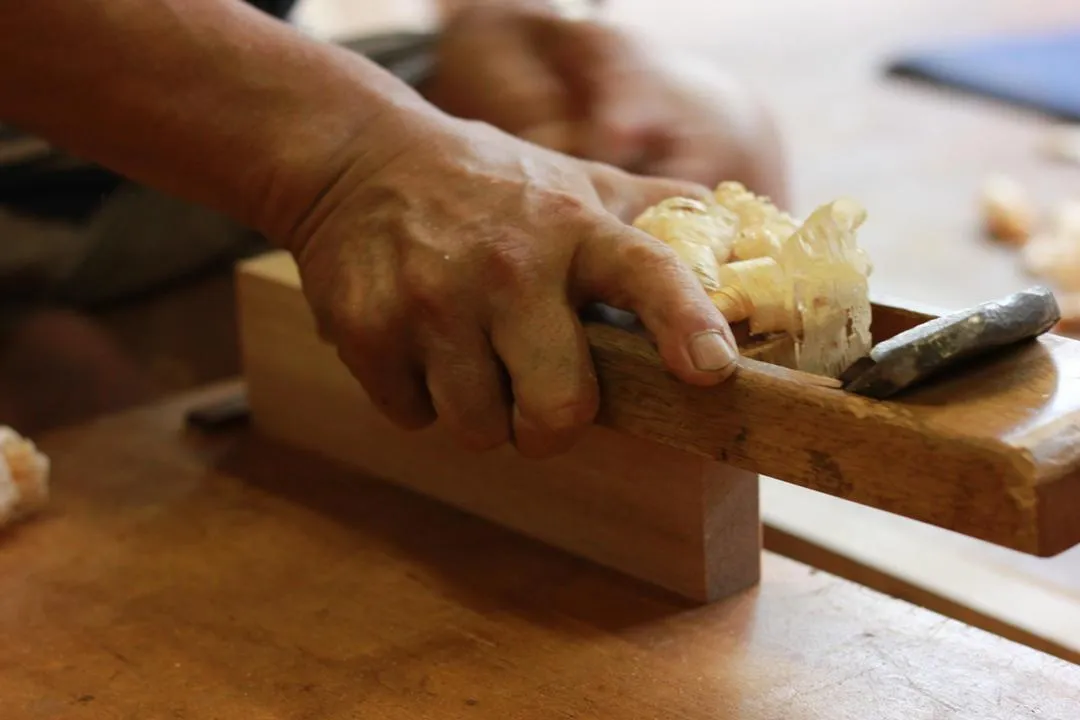
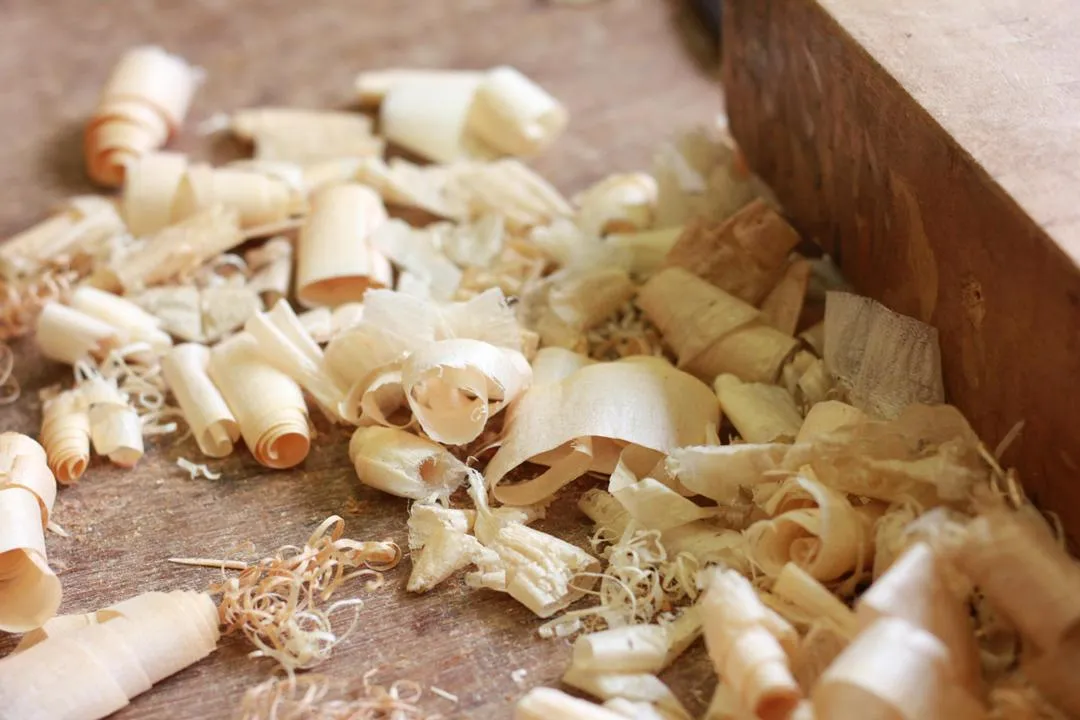
--Even Japanese people are not very accustomed to living with works of Edo sashimono these days, are they?
After all, it's because Edo sashimono includes many types of furniture and implements used in Japanese-style rooms. For example, a mirror stand (kyodai) is to be used when a person puts on makeup while sitting in the seiza position on a tatami mat; but there is nowhere to put such a piece of furniture in homes these days, which mostly have wooden floors. Placing a chest of drawers in a room that already has a built-in closet will only make the room cramped. The demand for wood joinery furniture has been disappearing with the changes in our living spaces and customs.
So the challenge we face going forward is to understand the modern way of life and create works that are easily accessible for the younger generation. To do that, we need a sense of balance between preserving our traditional techniques and creating something new. Thus far, I've been able to create products that invite people to discover a new side of wood through collaborations with external designers and people from other industries such as a bamboo screen craftsman. I'm also creating products that have never been seen before, such as wooden handbags and neckties.
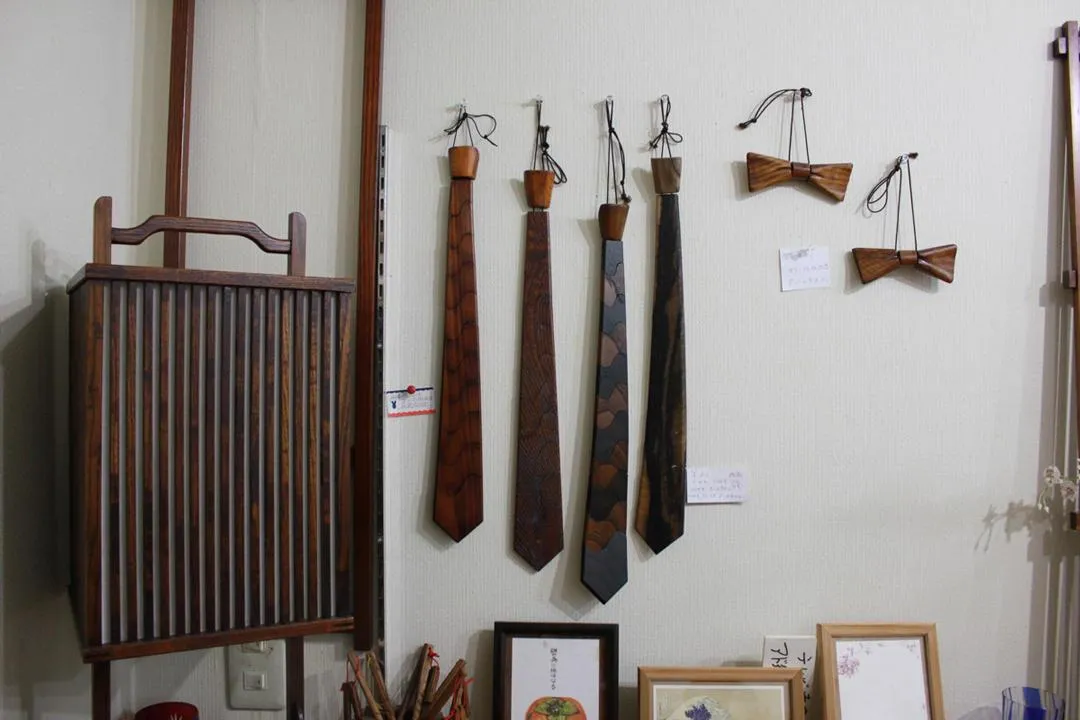
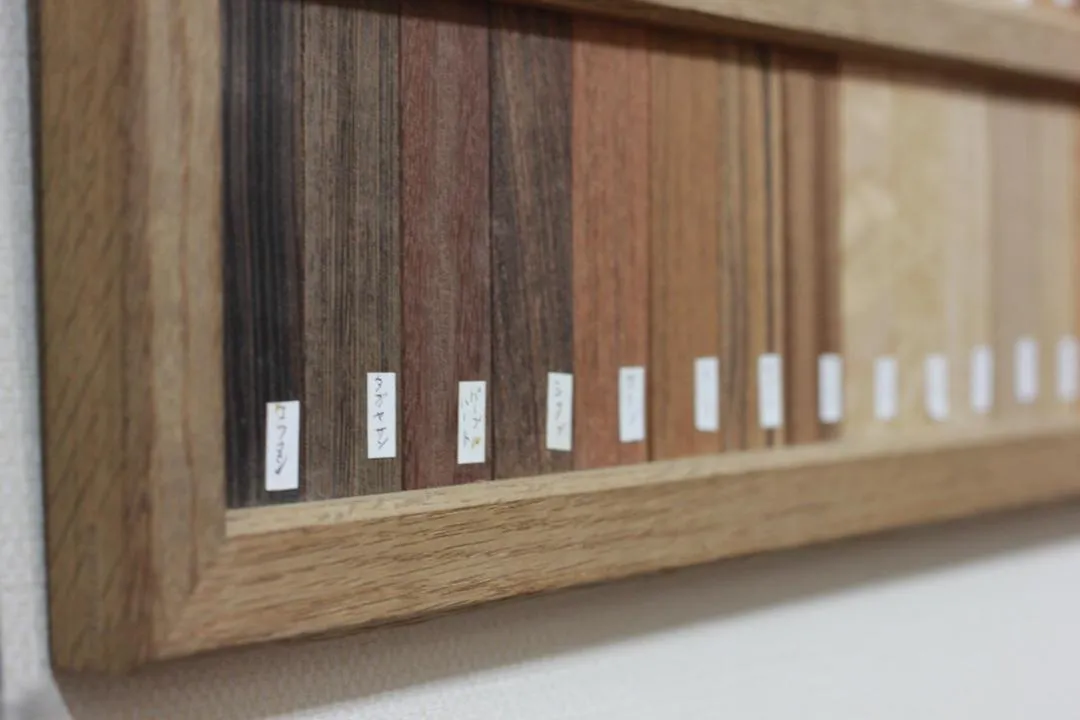
--This spirit of learning from the past to develop ideas from the future, preserving old techniques while creating something new, seems to fit the spirit of the neighborhood. Having lived here for a long time, what sort of changes have you experienced?
We've lost a lot of the small and mid-sized factories that used to be in the Misuji, Kojima and Torigoe areas. There used to be many hat makers in the Kojima area.
These days, there are more people living in apartment buildings, and that changes how they think about the town and its culture. I feel it changes how they perceive the neighborhood festival. Speaking of the attendees of the local Torigoe Festival, as it's also known as a night festival, the scene of the portable shrine entering the shrine alcove at night led by lanterns is very beautiful. I think that's the best part of Torigoe Festival, and I hope that custom continues.
As new people and shops appear and increase, so do new ways of thinking. While incorporating these new thoughts and customs, I would like to foster and preserve the culture we have always had to create a fun neighborhood. I hope that his spirit continues to create the atmosphere of this area.
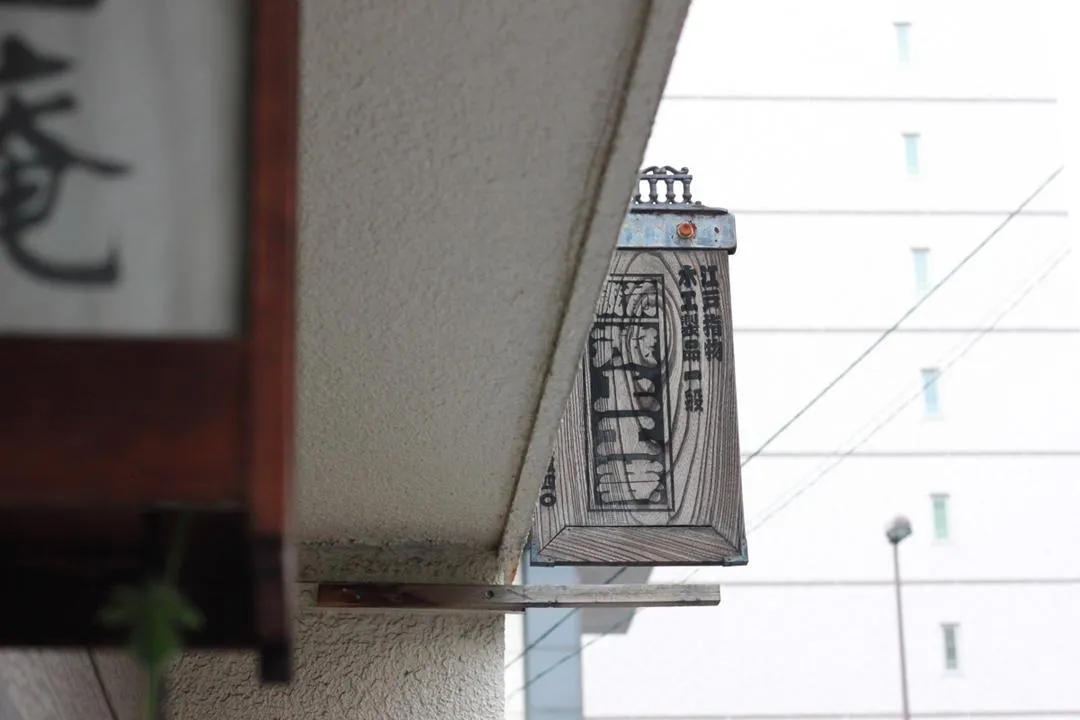
Profile
茂上工芸
The studio of Mogami Kogei was founded in 1912 by Hyojiro Mogami, a wood joiner who was trained under a wood joinery specialized in Edo sashimono. While devastatingly damaged during World War II, Hyojiro's son, Toyojiro survived and carried on the crafts training as the second-generation master of the business, and rebuilt the workshop. Toyojiro went on to make major contributions to preserving the culture and promoting the industrial development of Edo Wood Joinery, such as founding the Edo Sashimono Kyodokumiai (Edo Wood Joinery Association) together with fellow craftsmen, and paving the way to the craft being recognized as a "Traditional Craft of Japan." Yutaka Mogami, the third-generation master, took over the family business in 1995, and continues to protect and develop the "refinement of Edo."
sasimono.ciao.jp
4-37-10 Kuramae, Taito Ward, Tokyo
15minutes walk / 6 minutes bicycle ride from NOHGA HOTEL UENO
〉See on Google Map
Nomura Real Estate Development Group
TOKYO
Other prefecture

